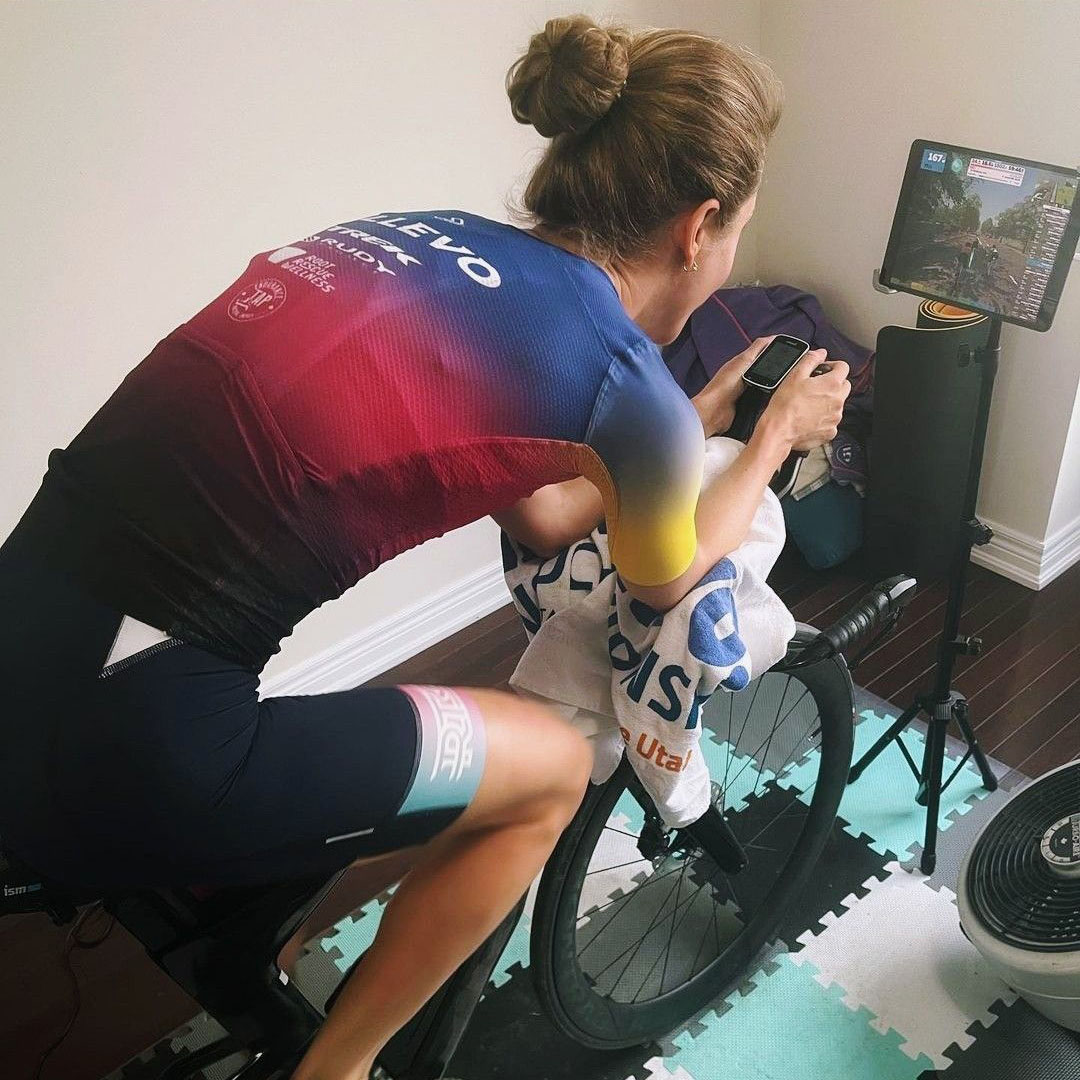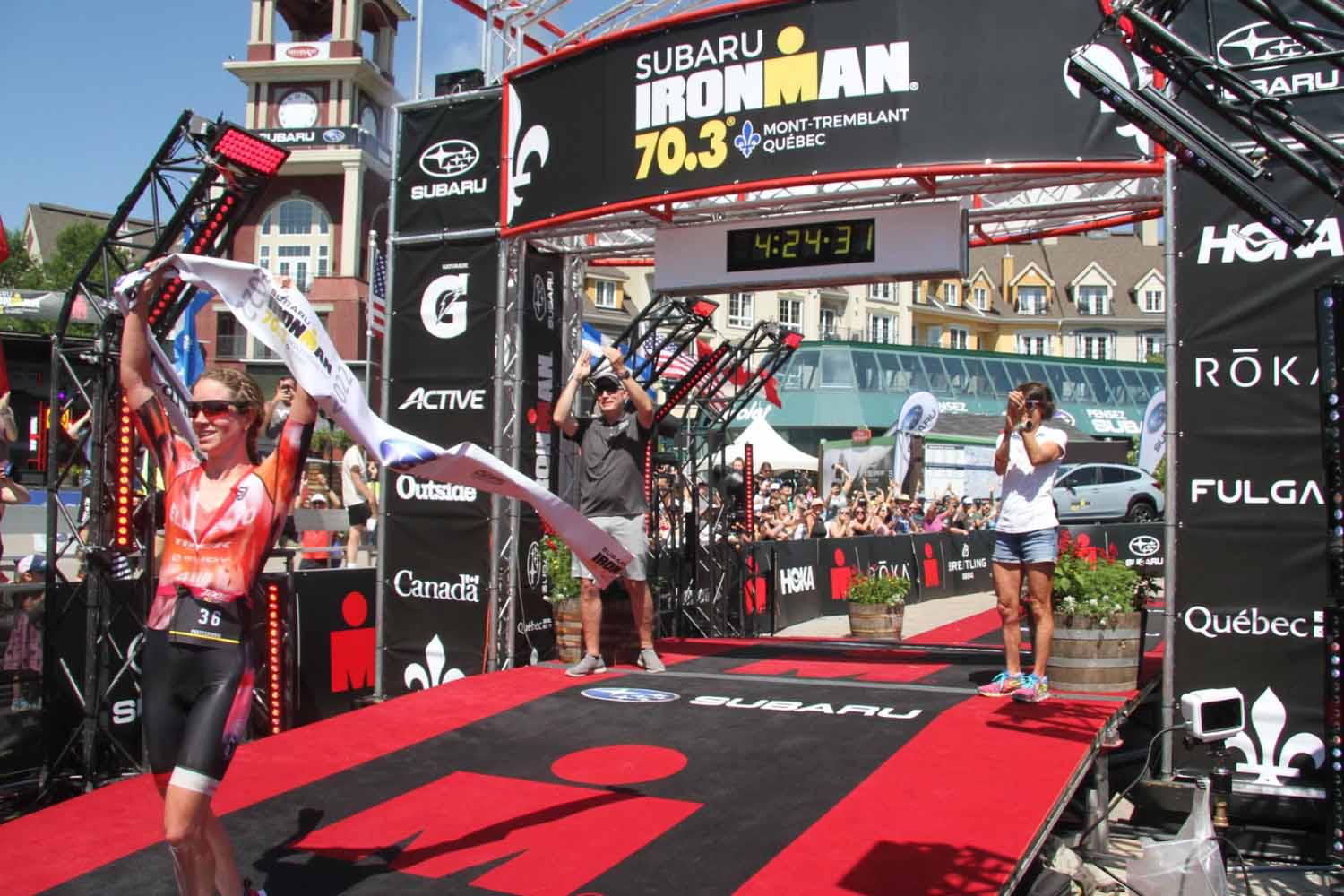Tamara Jewett - Powering Back to the Podium
Posted by Andrew Davidson on October 28, 2022
Tamara Jewett, a Canadian professional triathlete, comes from a background in high-performance middle distance track, which she transitioned from in 2017 due to injury. Her rapid ascent through the age group category saw her turning pro in 2019 and taking her first Ironman win at the 2021 Timberman 70.3. Tamara has added several podiums and another victory to her ever-growing list of results with the 2022 Ironman 70.3 Mont-Tremblant. She impressively balances her athletic career with her work as a part-time junior tax associate at Torys LLP, in Toronto. When she’s not training, racing or working she enjoys reading, the theater and hanging out with her husband and cat. She was kind enough to share with us some details of her comeback from a dramatic event that had recently derailed her upward trajectory.
On February 7, 2022 I was hit by a car while cycling in Tucson, Arizona. Whenever someone asks about it now, I find myself saying quickly and a little dismissively, “Yes, I’m totally fine. I am so lucky”. Which is both true and untrue. In the scheme of car/cyclist collisions, I am extremely lucky, and it was an indescribably good feeling in the ambulance to slowly check in with my body and realize that everything seemed intact. I had some fairly minor cuts (steri strips not stitches), a bad shoulder sprain (clearing up four months later but that I have mostly been able to swim through), and a concussion that took about a month to resolve (very good for concussions).
But I was briefly knocked out and woke up completely disoriented in the ambulance (my first memory is of a paramedic saying, “She thinks she’s in Florida!”). It took quite a while to bring back where I was or even to picture the pool I had been swimming in every morning that week. I still have no memory of the accident other than one moment of pure anger as I registered that a car was pulling into me. I never had bad headaches or light sensitivity associated with the concussion, for which I am grateful. My symptoms were extreme fatigue, mild vertigo, some difficulty with short-term memory and keeping track of things like laps and pace times in the pool (that normally would not be challenging), and persistent feelings of unease, apathy and “just not feeling myself”.
It was a serious training setback that turned a month-long high-mileage camp into a gradual recovery block. I am a part-time lawyer and was unable to work for two weeks because of the concussion. On top of that, my bike was wrecked, and I had to burn through the modest financial buffer I’d finally built with a strong season last year to replace it in time for the 2022 season (not easy during a supply squeeze in the industry). I am still working with Bike Law to recover compensation for property damage.
In the days immediately after the collision, I stuck to walks and gentle water activation. Moving helps your body heal. However, it’s important to stick to only the right amount of stress. That is, at first, extremely gentle. At first, my shoulder was too sore to take weight in the water, and the concussion meant that I got fatigued and disoriented quickly and easily. Some of the water activation was just kneeling in shallow water doing gentle swim stroke motions mixed with kick and pool jogging. I was deeply grateful when 4iiii stepped in quickly and enthusiastically to replace my power meter. I could say many things about different parts of my recovery, but this post focuses on getting back on the bike and the role of power numbers at different points in that process.
To avoid any risk of a compound concussion, my first couple of weeks back on the bike were strictly on a trainer. At this stage, I mostly ignored power. On the advice of a physiotherapist knowledgeable about concussion rehab, I paid most attention to heart rate. I started with gentle aerobic work and gradually tested how much I could raise my heartrate without bringing on concussion symptoms. The first time I tried to bring my heart rate up above recovery-ride level, I had to stop, feeling exhausted, frustrated and just “off”. At this stage, how my body felt was significantly more important to tune into than any outside measures. I did my best to be disciplined about backing off quickly and changing my plans if I didn’t feel right (I’ve gotten pretty good at that part, but still rely on support/reminders from Coach Suzanne and my family to keep me honest).
My 4iiii power meter arrived about three or four weeks after the accident, at which time I felt ready to seriously re-introduce power. I am using a single-sided PRECISION crank-arm power meter from 4iiii. Having used double-sided power meters in the past, I know that my pedal stroke tends to be even, and I find single-sided power totally adequate. I like to have a rough baseline to be able to compare different power meters, so being able to assess the 4iiii readings against power data from my Wahoo trainer was comforting in making the transition to a new device. At this point, the process mirrored the initial heart rate phase but with power and on a faster timeline – starting gently at easy watts and assessing how my body felt as I got back into my normal power zones.
The very basic, simple take-away was: to recover, I prioritized tuning into my body to assess how much to push it, at first subtracting and then gradually re-introducing helpful training metrics and tools, like a power meter. To be able to ramp back up, I didn’t need to stop moving, but I had to be patient about starting gently and ignoring external indicators before returning to them.
Now, I’ve managed to get back on the podium, taking second at IM 70.3 Eagleman and swimming and winning IM 70.3 Mont-Tremblant, biking and running more strongly than this time last season. My background in sport includes about a decade of very serious, chronic sports injuries as a track athlete before transitioning to triathlon. The long process of figuring out how to break that injury cycle has made me particularly good at working through injuries and setbacks and with the help of modern technology like 4iiii power meters, I’ve successfully returned to my competitive self!
Follow Tamara on her triathlon and life adventures here:






